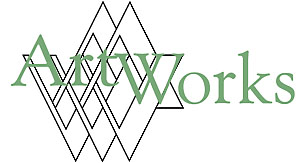
 |
Winter 2002 |
| The path to
publication Chairs Capital Grants Arts for All Grantwriting Tips Q&A for your grant application WV School districts praised Fine arts forums WV Filmmakers Festival Storytelling festival The Miracle Worker |
Two West Virginia school districts praised in new studyBy Francene Kirk Anyone interested in improving the quality of arts education will benefit from reading Gaining the Arts Advantage: Lessons from School Districts that Value Arts Education. This publication resulted from a study sponsored by the President’s Council on the Arts and Humanities and the Arts Education Partnership. Its purpose was to identify the conditions and practices that create and sustain district-wide commitment to arts education for all students. The study looked at school districts with successful arts programs across the country and determined what these districts had in common. Among them were Ohio County Schools and Randolph County Schools in West Virginia. Researchers wanted to know what factors made it possible for a district to make the arts accessible to the entire student population. They wanted to know how some school districts were able to make the arts a subject comparable to the so-called core subjects such as math and social studies. To make these determinations they gathered documents, made phone interviews and visited school sites. While these researchers found a variety of factors contribute to the success of art education programs across the country, community involvement was the single most critical factor. They determined that this involvement is practiced on two levels. First, in districts with successful arts programs, the community is involved in “the politics” of arts education. In other words, the community helps shape and implement board of education policies related to arts education. What does this mean? In short, it means that members of the community — broadly defined as parents and families, artists, arts organizations, business, local civic and cultural leaders and institutions — take an active role in seeing that local boards of education adopt written policies that value arts education. For example, members of the community may insist that local boards of education adequately fund arts programs; and, when budget cuts are necessary, monitor school boards to ensure that the arts are treated equally with other subject areas. Likewise, local community members may insist that the needs of arts teachers and students are addressed during facility construction and renovation. The second level of involvement is related to instructional programs. School districts with successful arts programs report a high level of parent and community involvement in schools’ arts programs. This involvement includes attendance at student exhibition and performances. It may also include partnerships between schools and community arts organizations. These partnerships often result in the development of artist residencies and involvement of arts faculty as artists in community arts events. This involvement may also result in the use of interdisciplinary teams of arts specialists and non-arts educators for curriculum planning and arts programming. In short, the results of the study published in Gaining the Arts Advantage suggest, once again, that if the community values arts education, the schools will value arts education. If parents take an active role in arts education, boards of education will respond. It has worked in school districts across the country — and it has worked right here in our own backyard. For more information on what factors contribute to successful arts programs, see this publication in its entirety at www.pcah.gov.gaa. Francene Kirk is the director of the Arts Action! Project. Arts Actions is sponsored by the Arts Advocacy WV Foundation and is funded by the West Virginia Commission on the Arts, the Benedum Foundation and the Department of Education and Arts. Dr. Kirk is available to assist parents and organizations in improving arts education in their schools and communities at no charge. She can be reached at 304-329-3868 or [email protected]. |